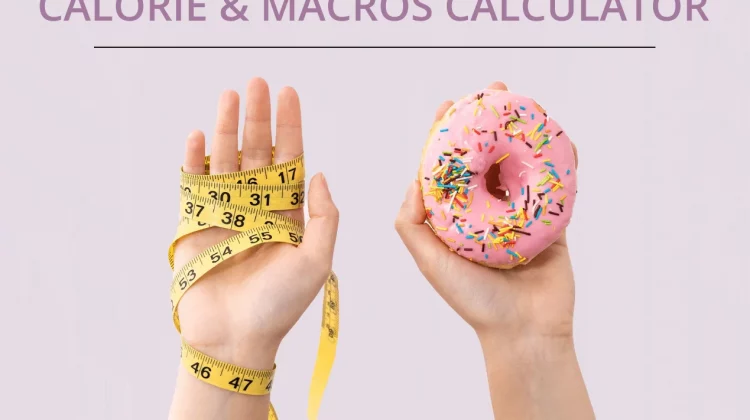
5 Science-Backed Fat Loss Habits That Actually Work: Expert Tips from a Certified Nutritionist
Stop Struggling with Weight Loss: Discover the Simple Habits That Deliver Real Results
Are you tired of trying every diet trend without seeing lasting fat loss results? You’re not alone. As a certified nutritionist and personal trainer, I’ve helped hundreds of clients break through their weight loss plateaus by focusing on sustainable habits instead of quick fixes.
The truth is, effective fat loss doesn’t require extreme diets or grueling gym sessions. It’s about building simple, science-backed habits that work with your body, not against it. In this comprehensive guide, I’m sharing the five transformative fat loss habits that changed my life and can change yours too.
1. Master Your Calorie Deficit: The Foundation of Fat Loss
Understanding the Calorie Deficit for Sustainable Weight Loss
The cornerstone of any successful fat loss journey is the calorie deficit. This means consuming fewer calories than your body burns daily. However, the key word here is sustainable.
Many people make the critical mistake of cutting calories too aggressively. Extreme calorie restriction can:
- Slow down your metabolism
- Cause muscle loss
- Trigger metabolic adaptation (where your body burns fewer calories)
- Lead to unsustainable yo-yo dieting
The Sweet Spot: How to Calculate Your Ideal Calorie Deficit
The optimal calorie deficit for fat loss is 200-500 calories below your maintenance level. This moderate approach allows you to:
- Lose fat consistently without metabolic damage
- Preserve lean muscle mass
- Maintain energy levels for workouts
- Create a sustainable eating pattern
Pro Tip: Use a reliable calorie calculator to determine your Total Daily Energy Expenditure (TDEE), then subtract 200-500 calories to find your fat loss target.
Why Crash Diets Fail: The Science Behind Metabolic Adaptation
When you drastically reduce calories, your body enters survival mode. Research shows that severe calorie restriction triggers hormonal changes that make fat loss harder over time. Your body adapts by lowering its metabolic rate, making each pound harder to lose.
2. Prioritize Whole Foods: Quality Matters as Much as Quantity
The Power of Nutrient-Dense Eating for Fat Loss
While calories matter, what you eat is equally important for sustainable fat loss. Whole, minimally processed foods provide the vitamins, minerals, and fiber your body needs to function optimally while keeping you satisfied.
Essential Foods for Your Fat Loss Diet
Lean Proteins (30% of your plate):
- Chicken breast, turkey, fish, tofu
- Eggs, Greek yogurt, legumes
- Benefits: Preserves muscle mass, increases satiety, boosts metabolism
Healthy Fats (20-25% of calories):
- Avocados, nuts, seeds, olive oil
- Fatty fish like salmon and mackerel
- Benefits: Supports hormone production, increases fullness, aids nutrient absorption
Fiber-Rich Carbohydrates (45-50% of calories):
- Vegetables, fruits, whole grains
- Beans, lentils, quinoa
- Benefits: Stabilizes blood sugar, improves digestion, prevents cravings
The 80/20 Rule: Balance Without Deprivation
Here’s the game-changer: you don’t need perfection to see results. The 80/20 rule means eating nutritious whole foods 80% of the time while enjoying your favorite treats 20% of the time.
This approach works because:
- It’s psychologically sustainable long-term
- Prevents feelings of deprivation
- Allows for social flexibility
- Reduces binge eating tendencies
When you nourish your body with quality foods most of the time, occasional indulgences won’t derail your progress.
3. Combine Strength Training with Cardio: The Ultimate Fat Loss Strategy
Why Strength Training is Non-Negotiable for Fat Loss
You’ve heard it before: “You can’t out-exercise a bad diet.” While true, the right exercise program accelerates fat loss significantly. Strength training is the most effective exercise for burning fat while maintaining muscle.
Here’s why muscle matters:
- Muscle tissue burns more calories at rest than fat tissue
- Strength training creates an “afterburn effect” (EPOC)
- It gives you a toned, defined appearance
- Preserves metabolism during weight loss
Your Complete Fat Loss Exercise Plan
Strength Training (3-4 times per week):
- Compound movements: squats, deadlifts, push-ups, rows
- Progressive overload: gradually increase weight or reps
- Focus on major muscle groups
- 30-45 minute sessions
Cardio for Heart Health and Additional Calorie Burn:
- Walking: Aim for 8,000-10,000 steps daily (low-impact and sustainable)
- HIIT workouts: 15-20 minutes, 2-3 times per week
- Choose activities you enjoy: cycling, swimming, dancing
Consistency Over Intensity: The best workout is the one you’ll actually do. Find a routine that fits your lifestyle and stick with it.
4. Optimize Sleep and Recovery: The Hidden Fat Loss Secret
How Sleep Affects Your Weight Loss Hormones
Sleep is perhaps the most overlooked factor in fat loss. Poor sleep disrupts two critical hormones:
- Ghrelin (hunger hormone): Increases when sleep-deprived, making you hungrier
- Leptin (satiety hormone): Decreases, reducing feelings of fullness
Studies show that people who sleep less than 7 hours per night have higher body fat percentages and struggle more with weight loss.
The Recovery Connection: Why Rest Days Matter
During sleep, your body:
- Repairs muscle tissue damaged during workouts
- Restores energy systems
- Balances cortisol and other hormones
- Consolidates memory and learning
7 Evidence-Based Tips for Better Sleep Quality
- Aim for 7-9 hours of sleep per night consistently
- Establish a bedtime routine: Wind down 30-60 minutes before sleep
- Keep your bedroom cool (65-68°F is ideal)
- Avoid caffeine after 2 PM
- Limit screen time 1 hour before bed (blue light disrupts melatonin)
- Exercise regularly, but not within 3 hours of bedtime
- Manage stress through meditation, journaling, or deep breathing
5. Practice Patience and Consistency: The Mindset for Long-Term Success
Why Fast Results Don’t Last
The fitness industry promotes quick fixes and dramatic transformations. The reality? Sustainable fat loss takes time, typically 0.5-2 pounds per week depending on your starting point.
Rushing the process leads to:
- Muscle loss alongside fat loss
- Metabolic damage
- Unsustainable habits
- Inevitable rebound weight gain
The Power of Small, Measurable Goals
Instead of fixating on your final goal weight, focus on weekly micro-goals:
- Hit your protein target 5 days this week
- Complete 3 strength training sessions
- Get 8,000 steps daily
- Drink 64 oz of water each day
These small wins compound over time, creating massive results. Plus, celebrating progress keeps you motivated throughout your journey.
Tracking Progress Beyond the Scale
The scale doesn’t tell the whole story. Track your progress through:
- Body measurements: waist, hips, chest, thighs
- Progress photos: Weekly or bi-weekly
- How your clothes fit: Often more telling than numbers
- Energy levels and mood: Important health markers
- Strength gains: Are you lifting heavier weights?
Your Fat Loss Action Plan: Where to Start Today
Ready to transform your body and health? Here’s your step-by-step action plan:
Week 1: Foundation
- Calculate your maintenance calories and create a 300-calorie deficit
- Plan 3 balanced meals using the protein, fat, and fiber framework
- Schedule 3 workout sessions (mix of strength and cardio)
Week 2-4: Build Momentum
- Track your food intake to ensure you’re hitting your calorie and protein goals
- Establish a consistent sleep schedule
- Add 2,000 steps to your daily average
- Measure your starting body measurements and take photos
Month 2 and Beyond: Optimize and Adjust
- Reassess your calorie needs every 4-6 weeks
- Increase workout intensity gradually
- Fine-tune your nutrition based on hunger and energy levels
- Continue celebrating small wins
Common Fat Loss Mistakes to Avoid
Even with the best intentions, these mistakes can sabotage your progress:
- Eating too little: Severe restriction backfires
- Skipping strength training: Cardio alone won’t give you the results you want
- Not tracking anything: You can’t improve what you don’t measure
- Being impatient: Expecting results in 2 weeks instead of 2 months
- All-or-nothing thinking: One bad meal doesn’t ruin your progress
Frequently Asked Questions About Fat Loss
How long does it take to see fat loss results? Most people notice changes in 3-4 weeks, with visible results appearing around 8-12 weeks of consistent effort.
Do I need to count calories forever? No. Once you develop intuition around portion sizes and hunger cues, you can transition to mindful eating without tracking.
Can I lose fat without exercising? Yes, through calorie deficit alone, but you’ll lose muscle along with fat. Exercise preserves muscle and accelerates results.
How much protein do I need for fat loss? Aim for 0.7-1 gram per pound of body weight to preserve muscle while losing fat.
Final Thoughts: Your Journey to Sustainable Fat Loss Starts Now
Fat loss doesn’t have to be complicated, restrictive, or miserable. By implementing these five evidence-based habits—creating a moderate calorie deficit, eating whole foods, combining strength training with cardio, prioritizing sleep, and practicing patience—you’ll achieve lasting results without sacrificing your quality of life.
Remember: Consistency beats perfection every single time. You don’t need to execute these habits flawlessly. You just need to show up, do your best, and trust the process.
Start with one habit this week. Master it, then add another. Before you know it, these practices will become second nature, and the results will follow.
Your transformation is waiting. Take the first step today.
About the Author: As a certified nutritionist and personal trainer, I’ve spent over [X] years helping clients achieve sustainable fat loss through science-backed methods. My approach emphasizes balance, consistency, and building habits that last a lifetime—not just until you hit your goal weight.
Ready to accelerate your results? Check out my Full Body Fat Loss Program—designed for busy people who want effective 30-minute workouts that deliver real results without the bulk.
Disclaimer: Always consult with a healthcare provider before starting any new diet or exercise program, especially if you have underlying health conditions.



